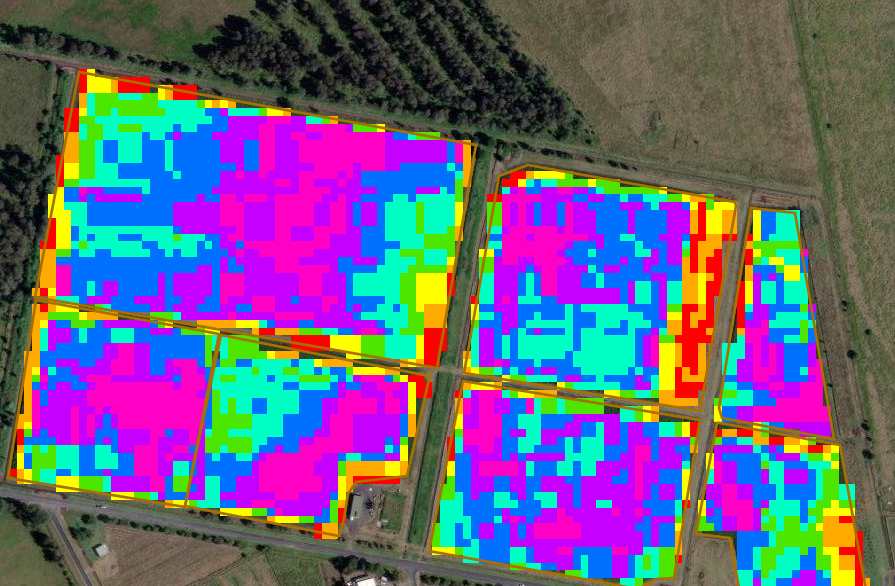“It’s the first time I’ve done anything like this, and I have to say I’m pretty impressed with the results,” said the Coraki-based grower.
Ian’s mapping data was collated – along with yield records from the past five years – with the assistance of Extension Officer Alice Moore from Farmacist who manages the project, in conjunction with ATTIA and Dr Moshiur Rahman from the University of New England’s Applied Agricultural Remote Sensing Centre (AARSC).
“Once Alice did what was needed to be done, she provided five years of our yield records to the University of New England where they assessed the maps using the remote sensing ‘Time Series’ platform to forecast crop yields,” said Mr Brown.
“I was expecting the forecast to come in within 20% of the actual percentage and couldn’t believe it when it came back within 1%. I have been growing and producing tea tree oil for 20 years and this sort of information is just excellent. I was very surprised and I’m glad I got on board.”
Mr Brown said the initial results have encouraged him to continue investigating the value of satellite technology. “Aside from yield forecasts, the images actually picked up parts of the crop that were performing well and those parts that weren’t,” added Mr Brown.
“So now, we’re ground truthing those areas to look at the soil conditions in parts that are underperforming and investigating what we can do to improve the soil and increase yield in seasons to come.”
Ms Moore said while the project is in its infancy, the positive results have certainly piqued grower interest.
“Ian was one of just two farmers involved in the first stage of the project so we need to be mindful that these results might not apply to every farm at this stage, however the first farm we did came back at 99% accuracy for plant biomass and the second farm was 96% accurate for oil yield and 95% for plant biomass,” said Ms Moore.
“We went in with a no promises approach because it was absolutely new for the [tea tree oil] industry. We were quietly confident, but it’s fair to say that the project team, as well as both growers were pleasantly surprised to be able to get such highly accurate yield predictions back.”
While satellite imagery is freely available, this is the first time it’s been specifically used and validated for the tea tree oil industry.
Forecasting models built at the University of New England have been applied to 14 different growing regions around Australia and learnings have been applied to multiple crops including avocadoes, citrus, mangoes, macadamias and sugar cane.
“I worked in the sugar cane industry for six years and that’s quite similar to the tea tree oil sector because you’re growing for biomass, not fruit or seed,” said Ms Moore.
“The sugar industry successfully used remote sensing for yield estimations and because of the similarities we were confident that it would work for tea tree oil growers as well,” added Ms Moore.










